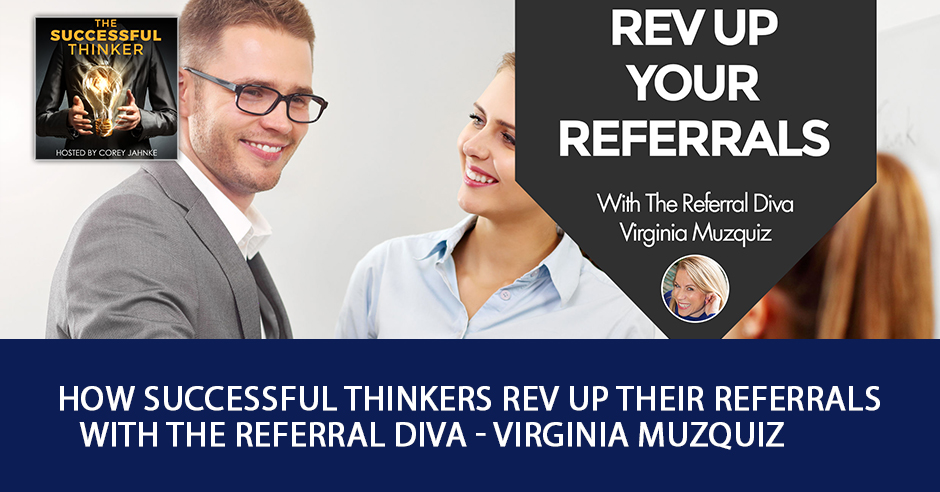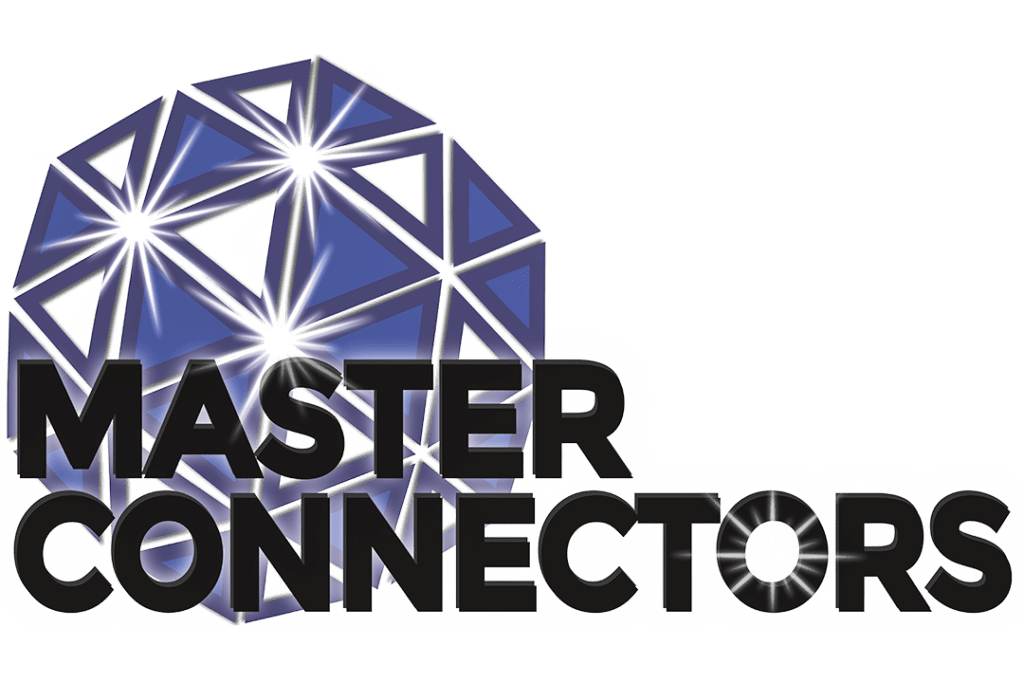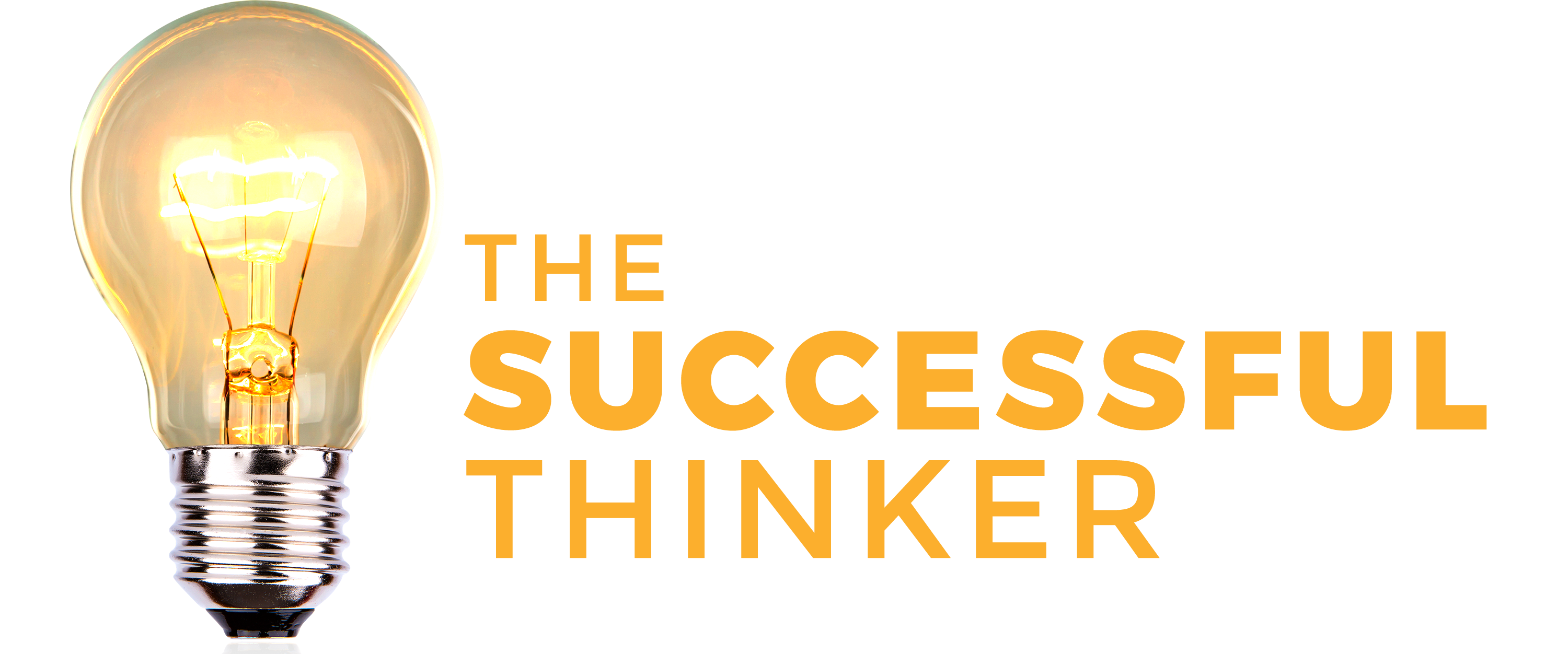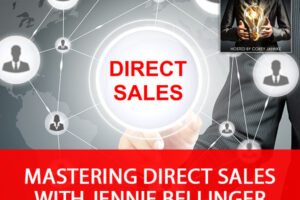
In this fast-paced and informative episode, Host Corey Jahnke and guest Virginia Muzquiz discuss the importance of approaching networking from a “How can I help YOU?” approach that allows successful thinkers to approach networking with a solid plan that includes a principle-centered approach focused on value creation and win-win partnerships. Virginia’s networking plan allows her to stay solidly grounded in her personal values which are: (1) vision – starting with the end in mind, (2) getting in touch with your core desired feelings – cultivating your own feeling and not allowing others to dictate how you feel, (3) dedicating yourself to a tangible noble cause – focusing on changing the world with your business, your job, and your life; getting your needs met is a given, (4) surrounding yourself with support – teaming up to serve a noble cause results to synergy, that moment of flow when the sum is greater than anything the individual parts could create. This is a must listen to episode for anyone who wants to develop strategic partnerships that last and add massive value to everyone involved.
—
Listen to the podcast here:
How Successful Thinkers Rev Up Their Referrals With The Referral Diva – Virginia Muzquiz
Why Cultivating And Leveraging Social Capital Through Expert Networking Is The Fastest Path To Profitability And Personal Fulfillment
We are going to have great fun because I have with me one of my all-time favorite people, and somebody I consider one of my best friends. This lady is known as The Referral Diva. She’s passionately driven to teach solopreneurs and sales professionals the pathway to building businesses that fueled their own passions, fund their dreams, and have massive impact on the communities where they live and they serve. When I say massive, I mean it. This lady’s name is Virginia Muzquiz and Virginia has over 30 years of teaching, training, and business-building experiences. Virginia has demonstrated that cultivating leveraging social capital is the fastest path to profitability for the small business owner. Small business owners struggle out there and what Virginia does a great job of is shortening the learning curves.
Among the things that she’s done, her many accomplishments, Virginia grew the contract service division of a nationally recognized tutoring company from zero in 2005 to $2.5 million in annual revenue by 2011. She did that totally by word of mouth and as the owner of Gateway Referral Institute. Virginia distinguishes herself as not number two or three, but number one franchisee in the US and number three in the entire world. That had earned her a seat on the exclusive executive circle until she moved on in 2005, and as the Chief Connections Officer at Master Connectors Inc. and Executive Director of two franchises of BNI, Virginia coaches 1,200 plus entrepreneurs building businesses using word of mouth best practices. She’s the host of Business by Referral podcast with listeners in nearly 30 countries. Virginia, I’m so excited to chat with you and to share your brilliance with my audience. How are you doing?
I’m doing great, Corey. Thank you so much for having me on this show. You are also one of my all-time favorite humans on the planet. The fan club is mutual.
Let’s start out this podcast by having you share with my audience your perspective on networking. Virginia, will you tell our audience what networking is?
I’d be happy to. Let me start by telling people what it is not. I see a lot of people confusing networking with prospecting. Prospecting is when I’m walking up to people and saying, “Hi, what do you do? This is what I do. Do you want to buy some of what I do?” That’s the mindset that they take into the room. “I got to make a sale or I won’t make my car payment. I got to make a sale or I won’t pay my house payment.” They’re focused on the scarcity needs that they need to meet in order to make it through another month. That prospecting, the reason it doesn’t work is one, desperation is not sexy. You have to be in the right room in order for that to happen.

Expert Networking: People confuse networking with prospecting. Prospecting is when you’re walking up to people and saying, “Hi, what do you do? This is what I do. Do you want to buy some of what I do?”
You have to be in the right room of people with a group of people who have the problem that you solve. That problem is their number one top of mind problem and they’re actively seeking a solution and serendipitously they bumped into you, spilled their drink on you and said, “I’m sorry,” and you said, “Do you want to buy my stuff?” They say, “Thank God I spilled my drink on you. You’re the guy I was looking for.” For that serendipity to happen, you got to go to a lot of events, and you would have to talk to all 100 people in the room before you found one person to have a sales conversation with. It’s just not effective. It’s not efficient and it doesn’t help you build a tribe. It doesn’t help you build influence and it doesn’t help you establish yourself as an authority in a marketplace.
That’s the number one. The number two is this notion of what I’m going to call Elmer Fudd marketing, which is hunting for clients. There’s this mindset to that that doesn’t work. I believe that networking is connecting with people to get things done, connecting with people to make a better world, connecting with people and solving their problems. The mindset when I’m meeting people isn’t, “What can I get from you?” It’s, “What’s going on with you?” Every one of us has 99 problems. They write songs about that and the challenge is that we may have 99 problems, but we’re only willing and ready and able to tackle one at a time. The notion of multitasking has been proven to be a total myth. Basically, when you’re multitasking, you’re just shifting from A to B, to A to B. You’re never doing A and B at the same time.
When it comes to problem solving in your life, if you’re solving a problem, you got to focus on it. Do an inventory of your assets, determine an action plan and hit it. That will solve the problem. At any given time, we can only focus on one of those challenges at a time. What I want to know when I’m networking with you is what’s your challenge, what’s going on with you, and who is the person that is uniquely equipped to assist you in overcoming that challenge? Eventually, the problem I solve will come up to the top, but it might not be top of mind right now. If I can take you through a process where I introduce you to competent partners who can help you solve problem number one, solve problem number two, solve problem number three. Every time you have a challenge, you come back to me and say, “That worked out so well with Phil. Here’s my problem. Who can you introduce me to?” Eventually they’re going to have the problem that I solve and they’re going to want to work with me. I just have a longer arc for that process, if you will.
I love that because Brian Tracy says the number one thing that separates successful people from unsuccessful people is that successful people have what he calls a long-time perspective. They’re looking down the road saying, “My success doesn’t depend just on what I do now. It depends on who I am.” I like what you said about that panicky scarcity mindset not being sexy. What I understood you say is you’re thinking when you’re meeting people as a long-term relationship. Is that what you meant?
It’s not so much that I’m going to have a long-term relationship. It’s that I have a longer arc, maybe more patience for example. It’s a longer play for me. When I met you, I had no idea that we were going to have a long-term relationship, that we were going to become friends. Certainly, I didn’t say, “Corey, you should do my program,” the minute I met you. I have no idea if you should do my program. I have no idea who you are, what you value. I don’t know if our values are in alignment. I don’t even know if I like you yet. I might like you at the outset or maybe at least not be have an adverse opinion or reaction. When I meet people, I want to know them and I want to know, “Are you in my tribe? Do we have some commonalities that bond us that are just not you have a need for my product or service? Do I want to invite you in my room?”
Networking is similar to dating. If you come on too strong or too fast, you won't get many partners. And the ones you do get are probably not the ones you really want. Share on XDr. Ivan Misner has written a book called Who’s in Your Room? for networking? The premise is there’s a one-way door into your world. Once you let someone in, they can never be let out. Would you have let these people into your life? You have to be your own gatekeeper and it’s not that you’re making people good or bad, you’re just making a decision about with whom do you want to do life? I’ll tell you, when you’re young, you feel like you got a lot of time and maybe you feel a little desperate and you can maybe get away with not being clear on who you are, what you’re doing. I’m going to be 54 years old and I believe that as we get older and more established, we absolutely have to have a clearer understanding of who we are, what it is that we’re hoping to accomplish in life, what are our assets, and what are the resources that we need to invite into our world. When we’re inviting people in, we need to know that it’s easy to let people in, but it’s hard to get people out. Take more time to discover who you’re with at any given time.
It’s taking the time to say who are you and how can I help you?
I’ll tell you this too. I’m trying to find who wrote this. I was interviewing somebody on a podcast named Brian McRae and he was talking about the inventory of relational assets. I want to talk about that because this is what makes successful people successful. Jim Niswonger calls them your superpowers. It’s like your Superhero Academy. The inventory of relational assets is who are you, what are your strengths, what can you bring to the table, and what are you willing to share and what do you necessarily feel like you need to hoard in your life? Things that you’re not willing to share with other people. Where I’m coming from with this is when I am wanting to go out and network, I want to attract people to me that need the assets that I have, the relational assets that I have, but also bring their own assets to the table. Scot Conway says give to givers who give. Don’t worry if they give directly to you, but do you see them out giving in the world because when you give to someone who’s giving, you exponentially amplify generosity in the world and that’s what makes life sweet.
I’ve often said to people, “We often focus on our need. We focus on our weakness. We walk around like a great big ball of needs and a big black hole of want and scarcity.” When you’re doing that, what you’re doing is taking account of your weaknesses and your lack of assets instead of walking around the world knowing that you’ve got this greatness that you can share with other people and then setting that up. So One of the things that podcasting example has done for me is it gives me a way to give to givers who give. If you’re such a giver, I want to promote you. I want other people to know that you’re a giver. Would you come on my show and be a giver? The cool thing about that is when we do these shows together, we learn so much from the people that we’re talking to that our knowledge base increases and we’re enriched by that. Do you have knowledge that you can share? What are the other assets that you have? Do you have support that you can share? Do you have extra money, extra time? Do you have a horse farm? What do you have?
I have a friend who said, “I have a captain’s license and I have a boat, so if you ever want to do a retreat with your people, we could all fly to the Florida Keys and I would take you out on a boat.” I said, “What would that cost?” He said, “Nothing. I would just do it because I like going out on my boat with people.” That’s a great asset that he’s willing to give and the offer of the asset, whether I take advantage of that asset or not. Simply the offer of the asset created more relationship between us. That’s what it’s about. It’s about offering what you’ve got. The last one I’m going to give on the superpower thing is when you look at like the Justice League or The Avengers. Every one of those superheroes has a kryptonite. They have a weakness, they have a blind spot. They have a place where their ego takes over or that they just don’t have that strength. What happens? The other superheroes come and they don’t come with all of their weaknesses. “Thor has a weakness. Let’s go shore him up. Let’s back him up.” That to me is what networking is about. It’s about being like the Justice League or The Avengers. It’s about surrounding yourself with people who amplify your strengths, amplify your assets by adding their assets to yours and contributing.

Expert Networking: Networking is connecting with people to get things done, to make a better world, and solving their problems.
I love that because that changes the question from, “What can you do for me?” to “What can we do for each other? What can we do together?”
What can we create together? Those are the people that are doing big things and those are the people that are showing up as influencers and those are the people that are up leveling their leadership skills and creating leaders and being more influential in the world and being a game changer. Ultimately, networking is about creating strategic alliances with people who have superpowers that you don’t and getting together for a noble cause to change the world. That’s what networking is about.
That’s great because I want to do something selfish here. I’m going to get you to share something for my Successful Thinkers out there that you shared on a video I watched. My jaw was on the ground. You talked about competition not being the guy that makes the same product that you make, but competition being about something else. Do you know what I’m talking about?
I have to say I’m not going to take credit for that. That came from an interview that I did with Dan Duffy. If you want to know more about it, you can go to the Business by Referral podcast and download Dan Duffy’s episode. I can’t give you all the specifics of this story because I don’t remember them quite honestly. Dan is a cancer survivor and he wrote a book called The Half Book. It’s all the things that nobody ever told you about surviving cancer. While he was writing the book, he started a charity and, in that process, he met a guy. It was a shoe company, a shoe manufacturer. He tells the story of this guy watching TV and the horrible tsunami in Haiti. There was such devastation. He’s watching the news and there’s a video on the news of a shoe washing up on the shore. This guy’s like, “I’m totally powerless to do much about anything about this, but I can do that. I could send shoes.” There are millions and millions of people on the planet that do not have shoes that need them.
He gets all these shoes and he sends them to Haiti. Then Katrina happened and it was like, “Okay, more shoes.” He ended up creating this shoe charity where it’s pretty interesting. You collect up bags of shoes and for every 25 pair of shoes or whatever, he’ll donate $25 to your charity. He’s getting nonprofits to use their teams to gather shoes for his charity and then using his platform to help other charities. Dan is a documentarist. He does video. He’s with this guy and he said, “Here I am. I’ve got my little itty-bitty charity and you’ve got this charity. I’m doing this documentary about your charity and here I am your competition.” The gentleman said, “Dan, you’re not my competition. There are millions and millions of people who need stuff in the world. They need support, need clean water, needs shoes, need clothing, need food. Other nonprofits are not my competition. My only competition is time. How much can I give in the time that I have? The only thing that’s going to stop me from putting a pair of shoes on every pair of feet in the world, is I don’t know that I have enough time.”
When we're inviting people in, we need to know that it's easy to let people in but it's hard to get people out. Share on XThat’s where networking comes in because we do only have a finite amount of time, but if you can get other people enlisted, if you can network your way and gather people around you who want to bring their assets to the table for a noble cause pointed at greatness, you can stretch out time. You can tesser time, if you will. You can elongate it and you can get so much more done in the short window that we have on this planet. That to me was very eye-opening. Networking can be about buying time, multiplying time, making every minute worth five minutes, six minutes, twelve minutes or an hour by bonding together for a common purpose.
That’s critical because people walk in with the wrong question in their head. They walk in with, “How can I make a sale?” That money that you’re talking about is only one of the assets that people bring to the table. It’s funny how it’s a small world because I believe you’re talking about an organization called Soles4Souls.
That’s exactly the organization.
My son, when he was about eight, he decided he wanted to collect shoes for Soles4Souls. He went all around Rice Lake, Wisconsin where we lived and put all these bins and made these things all together and he got on the radio show. He collected hundreds and hundreds of pairs of shoes and we delivered them to their corporate office, which I feel like it might’ve been in Nashville somewhere around there. What was interesting was back to what people can give. A lot of people don’t have money to give. They’re giving out when it comes to money, but he was able to go along and say, “You’ve got a pair of shoes that are sitting in your closet that you’re not using.” It was funny, Virginia, the different shoes that people would come up with. We’ll talk to them about it and they’re like, “I don’t even know I have these things in the first place. You mean some kid can use them in Indonesia or Haiti or some other place? That’s just amazing.” That’s something that I don’t think I would’ve ever contemplated before that time. Maybe you don’t have $5 to give, but you got some shoes and that’s the way it works in talent.
I had been The Referral Diva for about a decade now. I’ve taught people about their referral networks and how to organize your referral network and if you want me to share that, I will, but you have to go through and organize your referral network and how to squeeze more juice out of that lemon. It wasn’t until you and I became friends and started talking about some challenges that we were facing and just caring about each other. Suddenly I was like, “All these years that I’ve been thinking about my referral network, building my business by referral, I have not been giving the credence and the value to my knowledge and my support networks that I should, that maybe I should have.”

Expert Networking: Think about how you can bring value, how you can be vulnerable and open and share yourself with people who are interested in someone like you.
Maybe I could look at what happens in your life when you network with your knowledge network or when you network with your support network. We were in the Icon Maker Program together and now I’m in the Lead Elite Program. What was interesting was you and I have spent probably the past months sharing support and knowledge. I haven’t brought you a client. You haven’t brought me a client. That wasn’t the point in the first place, but when you think about everything you and I have accomplished together as friends, by sharing knowledge and support, my business is further along because of you. Your project is further along because of me in ways that will monetize down the road, but it isn’t about you and me bringing each other clients.
What you did for me was you brought me clarity.
You helped me become a graphic designer in my own pitiful little right. You have no idea that hour that you spent showing me how to use Canva, how that has shifted things for me and how that changed things for me. Now I can do Facebook posts and I can make posts for my podcast. I can do things that I couldn’t do before and just having that skill set. I’m no graphic designer, but I can do some basic stuff that I couldn’t do before that was holding me back. That moved me forward. Maybe we’re out networking, just because you want to find out a client or find a center of influence that can bring you a client. The very first thing that we can share with people is our knowledge and then our support and maybe then our referrals because referrals come from people that know us, like us, and trust us. For people to know us, know, knowledge, they come from the same root. Sharing our knowledge first then being supportive second will get us the credibility that we need and let people believe that we have knowledge and support to give to their referrals because that’s essentially what we’re selling, knowledge and support.
I know that it’s important to follow up in networking, but I struggle with some sort of a system to make that happen. Would you be able to share with me just a little bit about how a person can go about making sure they stay organized in their networking, how they keep in touch? What triggers and things do you use for that?
You need to have some technology. You’ve got to have something where you’re putting names, addresses, and information. A while back when I was growing in my workshop business, I was good at filling my live introductory events, but my conversion sucked and I met with a crackerjack virtual assistant and he said, “What’s the one thing you’re neglecting that’s costing you the most money?” I thought about it and I was like, “I don’t follow-up with the people who don’t buy at an event.” When he asked me why it was something like, “I’m busy and I don’t have time to chase these people down.” When I got to the heart of it, it boiled down to I feel rejected by these people.
If there were 100 people in the room and fifteen people bought, I felt rejected by the other 85. I was writing them off out of fear of rejection. First of all, it’s very important to understand what it is that holds you back from the follow-up, because if you’re telling me, “I’m too busy, I don’t have enough time, I’m overwhelmed,” all of that stuff is BS. You have a reason and there’s something deep within you. It might be, “I’m just not worthy. What if I were successful and I couldn’t keep it up?” All of that stuff inside you is what’s keeping you from following up. I’ll give you my tactics. I got three simple tactics, but you won’t use them if you don’t have a good idea about what it is that you’re thinking and what is the tape that’s playing underneath that’s stopping you from taking these actions.
There’s a reason you’re not doing it. For me, I feel rejected. When people say no the first time, I hear, “No, I don’t like you. You’re worthless,” but what they’re saying is, “I’m not ready. I’m solving a different problem right now.” They’re saying, “I don’t know you well enough. We haven’t cultivated enough of a relationship.” I don’t know your audience very well, but I want to liken this to dating so it might sound a little crass, but I’m going to up it up. Networking is a lot like dating. If you’re that person who just desperately wants to get in bed with somebody, you’re going to get a certain person that wants to do that.
Everyone has his own weakness, a blind spot. They have a place where their ego takes over if they don't have that strength. Share on XUsually, somebody who’s needy, doesn’t want commitment, and isn’t in it for the long haul. They’re just in for the dopamine rush of having an encounter. If you’re somebody who’s looking to get married, you have a different mindset around that. Let’s say that you use some sort of social media. Maybe you use Tinder. When you meet, you’re like, “Hi, how are you?” Maybe you both buy your own drinks and you both by your own meal and if you have a nice conversation, then the next time comes and you say, “I’d like to take you out again and this time would you allow me to pay the bill?” They say yes, and you negotiate that and then you have dinner and then maybe you decide to share something that you enjoy, like a movie or ice skating or bowling.
Then you get to know each other and as things progress, then maybe you take it from the bar to the restaurant to the bedroom across time. If that’s how you’re networking, that makes a lot of sense. If you’re networking like, “Hi. Want to go to bed with me?” Most women are going to say, “No, thank you.” That’s how it works and they’re not going to enjoy that first encounter. One of the things that’s very important about follow-up is to understand that you cannot come across when you’re following up as, “I want to sell you my stuff. I’m going to badger you and pester you relentlessly until I break you and you say yes.” It’s the old Pepe Le Pew model. We’ve been taught, particularly men, to be like the relentless pursuit because eventually you’ll wear them down and they’ll say yes.
It’s that all, “It takes seven times,” or something.
It does. This is funny because they go, “It takes seven touches.” No, it doesn’t, don’t touch me. I don’t need touching. What I need is relationship building. What you want to think about is how can I be vulnerable, how can I be open and how can I share myself with people who are interested in someone like me? Not everyone is going to be interested so they will unsubscribe. You have to be okay with that. The first thing that I suggest is to get a good CRM. There are some good free ones. Insightly.com, Zoho. I happen to use one called Hatchbuck. It was written here, coded here in St. Louis. I happened to know the guy and I was part of the pilot and I’ve always used Hatchbuck. That’s what I use. Use an auto-responder, some way to be able to put in names and email addresses and be able to send out some content. Keys to success with nurturing campaigns are keep it educational, keep it informational, keep it personal, do not sell. Segment your lists and be sure that your content is of interest to the list.
My content is different depending on how I have you tagged in my system. Borrow other people’s content and give credit. You don’t have to be a great writer. For example, I’m going to love sharing stuff from Successful Thinker Magazine. I’m going to love sharing podcasts. I’m going to say, “This group of people is a group of people that would be interested in what Corey Jahnke is doing. I’m going to share Corey Jahnke with them. I’m sharing my knowledge and my support network. I’m sharing people that they might be interested in. I’m going to create an editorial calendar and I’m going to program that to go on autopilot. I’m going to be able to put somebody in. I’m going to tag them like, “Do this campaign,” and thirteen weeks of content is going to go out to them. Maybe it’s going to be an appreciation email with a free gift. Maybe two weeks later I send out somebody else’s content. Maybe week five I’m going to send out a case study. “I just had this awesome experience I wanted to share with you.” Maybe week seven is you’re going to share a seasonal recipe or a personal story, something you’ve learned, a realization. It’s something that lets people into your life.
It could be a picture of your cat. It was Lisa Sasevich, who was The Ezine Queen, said that she never got more engagement than when her cat was sick and she posted a picture of her and her cat and did that in her Ezine and that Ezine was the one that everybody subscribed to and responded to her. “Your cat is so cute. I’m sorry he’s sick.” That’s where she got more engagement. Maybe another week you introduce a referral partner that could be of service or you promote a friend. Week eleven, a little bit more of other people’s content, and then week thirteen might be a blog post, a personal reflection. It’s about planning out that content and then putting it on autopilot. The second step is mastering the art of a handwritten note. Email is only getting a 4% to 6% click-through rate. In texting, you get a much higher rate, but also it’s annoying as get out because more and more people are using it, but I’m telling you the handwritten note with a stamp is opened every single time. There’s a guy who wrote a book, his name is Michael Maher. He wrote a book called The Seven Levels of Communication and he has a great video on YouTube about how to write a great note.

Expert Networking: People have more passions in their life than just the product, service, or brilliance that we bring to the table.
Couple of tips are use blank note cards that reflect who you are. I like note cards that have owls or hummingbirds on them because those are my animal totems. They’re personal. It’s not about my BNI business or my Master Connectors logo. I don’t put my business card in there. I see beautiful note cards that speak to me and then I send things out. I use a fine point Sharpie, believe it or not, blue ink is the most preferred color. You always want to write in blue ink, not black ink. I do like to write in purple ink because I’m a purple fan, but blue ink seems to be the recommended one. Make sure you have lots of stamps. You can go and you can buy stamps that are nifty and they are a reflection of you. Maybe they are breast cancer stamps and you have a passion for curing cancer. When you have those stamps available, you use those kinds of stamps. You could also use something called send out cards. I did an interview with Jordan Adler if you want to listen to that when he talks a little bit about how do you send out cards. The key with using that service is that you have to take the time to personalize the photos on the card so that somebody knows you put a little bit of attention into it because it is a manufactured card. They manufacture the card and then they direct send it, so you want to put a little time and thought into that.
Then the last thing that I do is I divide my client list into multiple buckets. A clients, platinum, premier, ideal, perfect favorites. They bring me 90% of my profit, 90% of my joy and I call them probably monthly and I go, “How are you doing? What can I do for you? I just read a great book and I thought of you.” Pick up the phone and say, “How are you doing?” B clients, those are generally like repeat clients. They pay what you asked, they’re grateful. Occasionally they recommend people to you. Maybe I’m going to call them quarterly. C clients are those one-time customers, but I do keep in touch with them and maybe call them twice a year. I could go on with this forever. If people are interested in how I follow up, they can go to MasterConnectors.com/followup. They can download my Faithful Follow Up Guide. I don’t always give it away because it’s work and like people like free stuff that doesn’t make them work. You asked the question, so that’s it. That’s my follow-up system.
I want to pull out two specific things that come to mind after the brilliance that you shared. The first one was that part about what holds me up from following up. I had never considered that, but you’re right on there. There’s a reason why we’re not doing it, Successful Thinkers. Just sit down with yourself and get clear on what is it. Don’t hide behind technology. There’s something inside of yourself that’s keeping you from doing that. I’m making a list on my notepad about the things inside myself that are keeping you from doing that. That number one is brilliant. Then there was something that you said that I also want to highlight and that is give credit where credit is due. You did that when I asked you the other question. “I’m not going to take credit for that,” you said or shared an article for someone else. People are under the impression that people want to do business with brilliant people. Connectors are real people. When you’re saying, “Let me connect you to some Information that I found,” that gives you more credibility than, “Let me give you some information that I wrote. What do you think?”
A guy that I worked with when I was in Referral Institute, his name is Mike Macedonio. He owns BNI out in the bay area out in California. I remember training with him and he said to me, “Do you know what your biggest problem is? You’re too darn smart.” I was very offended because truthfully my whole life, I wasn’t the pretty one. I wasn’t the popular one. I was the smart one and that’s all I had going for me. When somebody said to me, “You can’t show up like that,” I was like, “Then I got nothing. I have no other way to show up because all I am is smart.” We all have that, especially when you have siblings. There’s the smart one, there’s the popular one, there’s the athletic one. I was the chubby, smart one. For me to be told that I was too darn smart, I wanted to punch him in the chops.
In hindsight, I’ve had a decade to sit on that and I’ve seen some other people like to show up with their Harvard MBA brilliance. I’m like, “Yuck.” It’s a wall when we’re using our brightness, our intelligence, and we’re putting it out there. I do want to share my brilliance. I also want to be careful that I’m not using it as a tool for augmenting my personal significance, my sense of my own personal significance. The reason that sometimes people would rather hear from other people is this, and I’m going to quote Scot Conway, “Because people are whole people leading whole lives.” I’m talking about networking. You’re talking about mindset, but people like wine or they like to eat guacamole or they’re passionate about puppies. They have more passions in their life than the product, service, or brilliance that we bring to the table. We have to create our own sort of Justice League that speaks to our network in ways that matter to our network. That’s important. Let me go back to the CRM. As you’re finding out about people, you have people in your network that are animal advocates. This is just occurring to me right now.
I have a friend named Karen. I have a friend named Eric. Eric rescues kittens, Karen rescues dogs. I’ve never thought to introduce Karen to Eric. I’m going to as soon as I get done here, but Karen is a financial advisor. Eric is an electrician. Why would I connect them? If I put Karen and Eric together and I put them in my autoresponder and I have a tag that is for my animal advocates, then I find out about an event or I find an article about animal advocacy. I’m going to make a donation to the ASPCA on behalf of all my animal advocate clients, friends and network, and I make that donation. I send out an email blast to those people saying, “I had the opportunity to do this great thing. I thought of you and because I value you, I did this donation in honor of all of you, my friends who are animal advocates. I love the work in the world that you’re doing.” I did not make that about me. I made that about them. If I’m connecting them and I’m making a little mini tribe around that inside my tribe and they know each other, aren’t they going to think better of me because I connected them to people who are doing something in the world that matters to them? I’m the one who did that, so now they can amplify their animal advocacy together.
I know that you’re a big fan of one of my favorite books, The Go-Giver. The connector is one of the biggest, most successful people in the whole book. A lot of people just skim over the connector, but he’s important. This has been so educational for me. I’ve got all kinds of notes written and you had listed one of the links that people can find you at. Will you please share with my audience the best way to get in touch with Virginia Muzquiz going forward?

I’ve got free resources at MasterConnectors.com. My Faithful Follow Up Guide is there for those of you who want to roll up your sleeves and get some work done. You can also download the first chapter of my eBook called Referral Alchemy: Six Months, No Secrets for Turning Your Network into Gold. If you’d like to read the first chapter of my book, you can do that there as well. You can follow me on Twitter at @TheReferralDiva. Like the Master Connectors Facebook page. Hit me up on Messenger. I’m there and connect with me on LinkedIn as well. That’s a place where I do a lot of blogging. You can check out my posts and my blogs on LinkedIn.
I appreciate you sharing all that information. I am grateful for your friendship and for this interview. I just learned so much and I know my Successful Thinker audience did as well. Virginia, any last thoughts you want to leave with the audience? One golden nugget you want to give them?
I have two asks and then I’ll give a nugget. My first ask is for everybody to go to Business by Referral podcast and subscribe, rate, and review the podcast. There is an episode with The Successful Thinker Corey Jahnke, so download Corey’s episode and listen to that conversation because Corey, you were brilliant on that episode and I would love for your audience to be able to hear you. Second, I would love if you would all support me in ending global poverty by going to TenByThree.org and making a donation in any amount you can to Ten By Three and put in the notes Ivory Coast. This 2019, I have committed to raising the funds to put 200 entrepreneurs in Cote d’Ivoire, Africa on a three-year path to prosperity.
$33.33 puts an artisan in business and in three years they can create an economy of scale where there wasn’t one before. If your audience are so inclined to help me out with that, that would be an absolute give for me. I’d appreciate it. My final tip is don’t be afraid to just be you. You will have people tell you to stop being you because the you that you are makes them uncomfortable in some way but be you. Be authentic. Be real. Take stock of your assets and then share freely of your knowledge and your support so that you can gain trust with people. Once you have that trust and that relationship, everything else will flow from there. All success will flow from there.
Thanks so much my friend and thank you, Successful Thinkers, for joining us for this wonderful episode. I wish you a magical day and I want you to know that I believe in you.
Important Links:
- Virginia Muzquiz
- Master Connectors Inc.
- BNI
- Business by Referral
- Who’s in Your Room?
- Dan Duffy – previous episode of Business by Referral podcast
- The Half Book
- Soles4Souls
- Insightly.com
- Zoho
- Hatchbuck
- The Seven Levels of Communication
- YouTube – Michael Maher
- Jordan Adler – previous episode of Business by Referral podcast
- MasterConnectors.com/followup
- The Go-Giver
- @TheReferralDiva – Twitter handle
- Master Connectors – Facebook
- LinkedIn – Virginia Muzquiz
- Business by Referral on iTunes
- Corey Jahnke – previous episode of Business by Referral podcast
- TenByThree.org
- https://www.Facebook.com/masterconnectors/
- https://www.LinkedIn.com/in/VirginiaMuzquiz/
- www.MasterConnectors.com/ebook
About Virginia Muzquiz
 Virginia Muzquiz is well-known as the Referral Diva. She is passionately driven to teach solopreneurs and sales professionals the pathway to building business that fuel their passions, fund their dreams and have MASSIVE IMPACT on the communities where they live and serve. With over 30 years of teaching, training and business building experience, Virginia has demonstrated that cultivating and leveraging social capital is the FASTEST path to profitability for the small business owner.
Virginia Muzquiz is well-known as the Referral Diva. She is passionately driven to teach solopreneurs and sales professionals the pathway to building business that fuel their passions, fund their dreams and have MASSIVE IMPACT on the communities where they live and serve. With over 30 years of teaching, training and business building experience, Virginia has demonstrated that cultivating and leveraging social capital is the FASTEST path to profitability for the small business owner.
Among her many accomplishments, Virginia grew the contract services division of a nationally recognized tutoring company from $0 in 2005 to $2.5 million in annual revenue in 2011 — completely by word-of-mouth. As the owner of the Gateway Referral Institute franchise, Virginia distinguished herself as the #1 franchisee in the US, #3 globally, earning her a seat on the exclusive Executive Circle until she moved on in 2015. As the Chief Connections Officer at Master Connectors, Inc and an Executive Director of two franchises of Business Network International (BNI), Virginia coaches 1200+ entrepreneurs on building business using word-of-mouth best practices. Virginia is also the host of the Business By Referral podcast with listeners in nearly 30 countries!
Love the show? Subscribe, rate, review, and share!
Join the Successful Thinker Community today:


